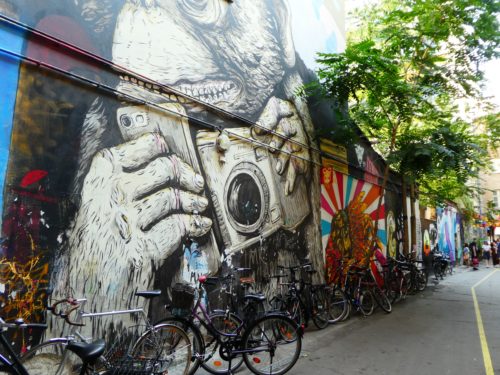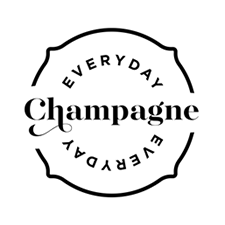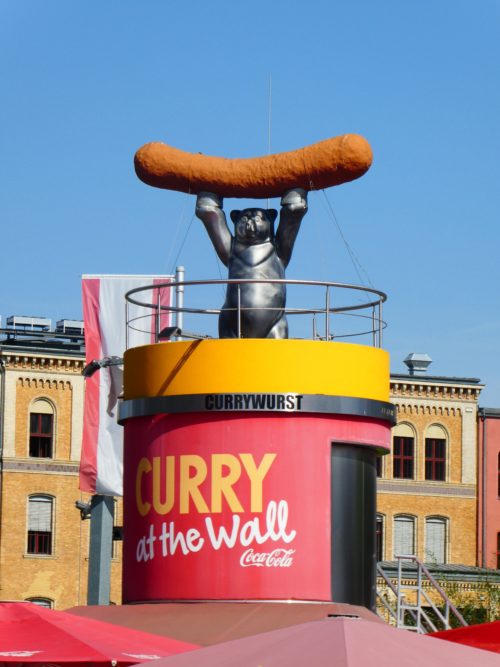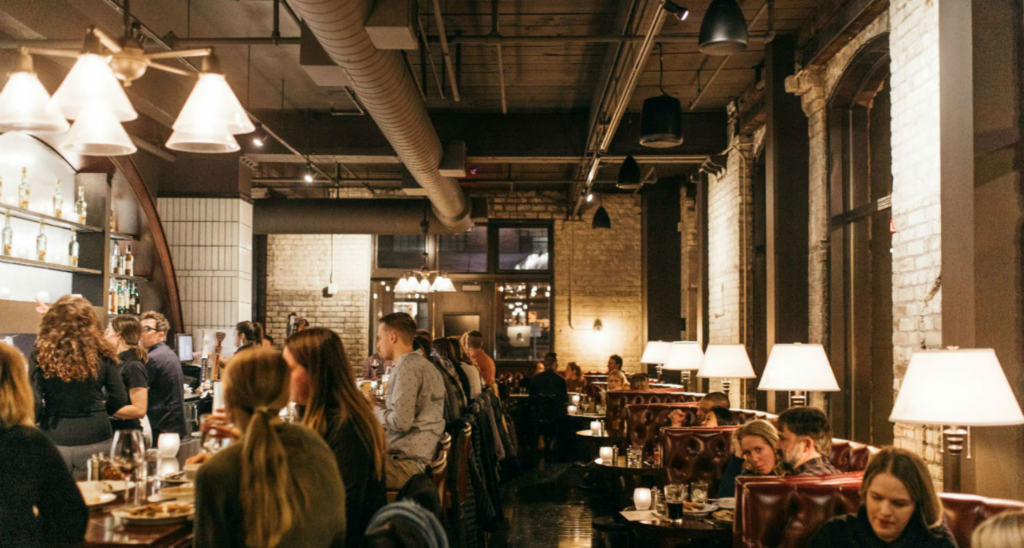October 4, 2018
What not to do in Berlin:
- Don’t go to Checkpoint Charlie… Unless you’re in the mood for KFC. It’s ridiculously crowded and touristy, and has lost the poignancy of the time it’s supposed to represent. And many chain fast food restaurants are right in the same area.
- Don’t get the giant currywurst in your picture at the Topography of Terror. Any photos you take of what should be a timeline and visual reminder of one of the most horrific times in world history, which details the rise of Hitler, are bound to include a giant smiling currywurst over the wall in the background. #perspective
- Don’t drive. The best way to get around anywhere is by bike.
- Don’t miss the underbelly. The street art, the former nightclubs-turned-artists’-enclaves, the bohemian melting-pot neighborhoods, the hofs in the Jewish Quarter—it’s all there.
- Don’t think Germans are all the same. Germans from Munich will be offended; Berliners will laugh and simply say “We’re Berliners.”
What to do in Berlin:
- Eat currywurst. Not the giant one in the photo, but you’ve got to eat one, complete with Gessner Cola, East Berlin’s version of Coke.
- Hang out in the Jewish Quarter. Have coffee, visit Otto Weidt’s Workshop for the Blind (we’re not museum go-ers, but this is brief and poignant), and eat a Pfannkuchen and a Berliner (basically a jelly donut—not a Berlin resident).
- Rent a bike. Seriously, bikes can go anywhere and have the run of the city. It’s the best way to see the neighborhoods, the museums, and cruise around the Tiergarten (where you can ogle both the nudists and the flower gardens).
- Walk through the Holocaust Memorial. And don’t climb on it like the other dumb-ass tourists.
Touristy Berlin is not the highlight of this city. The highlight is seeing firsthand what an incredible melting pot of acceptance and diversity the city has always been. It’s resulted in a richness in art, culture, restaurants of every cuisine (you won’t just eat wiener schnitzel for every meal), and, yes, the underbelly of music and clubs the city is known for.
For historical reasons, you should walk through Brandenburg Gate, remembering Ronald Reagan and JFK and that the wall was only torn down in 1989.
It’s a visual reminder not only of divided Berlin, but the repression of the German population by the Soviets. You should walk or bicycle along the remaining section of the wall, which is covered in artists’ paintings from 1990. The Reichstag (where Norman Foster did a stunning restoration and created the iconic dome where the people can look down on the government) and Reich Chancellery are worth a drive-by as you’re heading down the Spree River. Museum Insel (Island) does have incredible museums with not-to-miss artifacts from around the world. (Again, we’re not museum go-ers, but we realize normal people sometimes are.)
The most intriguing part of Berlin is the contrast of bombed-out sections of the city from WWII and rebuilt East Berlin after the fall of communism, with just a few sections that show off the city’s original glory. As a whole, it’s a relatively new city with stark, bleak vestiges of communist architecture that still remain. It places bunkers riddled bulletholes next to bakeries and dance halls.
The retail is most interesting if you get away from the chains, and venture onto the side streets in the Jewish Quarter and around the Mitte. Berlin is all about cool art and design, not dressed-up big-name brands. (Those shops are for the tourists, like in every other big city.)

To Stay:
- Soho House Berlin. This is probably the coolest hotel in the coolest neighborhood.
- Das Stue. If you’re not cool, stay here. It’s a favorite for business types, with a quiet location near the Tiergarten. (Although if you get the right room, you can see the kangaroos, donkeys, and emus in the adjacent zoo.)
- Everyone will tell you to stay at Hotel Adlon Kempinski, but we have a rule about staying at hotels across from Starbucks or Dunkin’ Donuts (unless we’re in New York, where they’ve infiltrated every corner).
- If you’re really cool, and you like accommodations that are a little odd, Casa Camper has a prime location in the Jewish Quarter and a rooftop with free snacks all day (a sure way into our hearts).
To eat:
As you’ll find in most of Europe, the bakeries and coffee shops in the non-touristy areas are all great. The Biergartens are fairly omnipresent, and all boast great sausages and wiener schnitzel.
The dining variety is pretty great, ranging from Michelin-starred restaurants (there are quite a few with one or two stars) to Turkish kabob stands (fun fact: Berlin has the largest Turkish population outside of Turkey).
A few good experiences we had are at what the hotels would call “hot spots,” like Katz Orange, Grill Royal, Cantina (Bar Tausend), and Sage
The best German food we’ve found is at places like Borchardt (a little more expected, and been around forever), but also more progressive places like Lokal.
One last thing: If you want to get a great first-day overview of the city, hire a local guide who will take you everywhere except the tourist places. We recommend Alex Rent a Bike, and—you guessed it—Alex.




